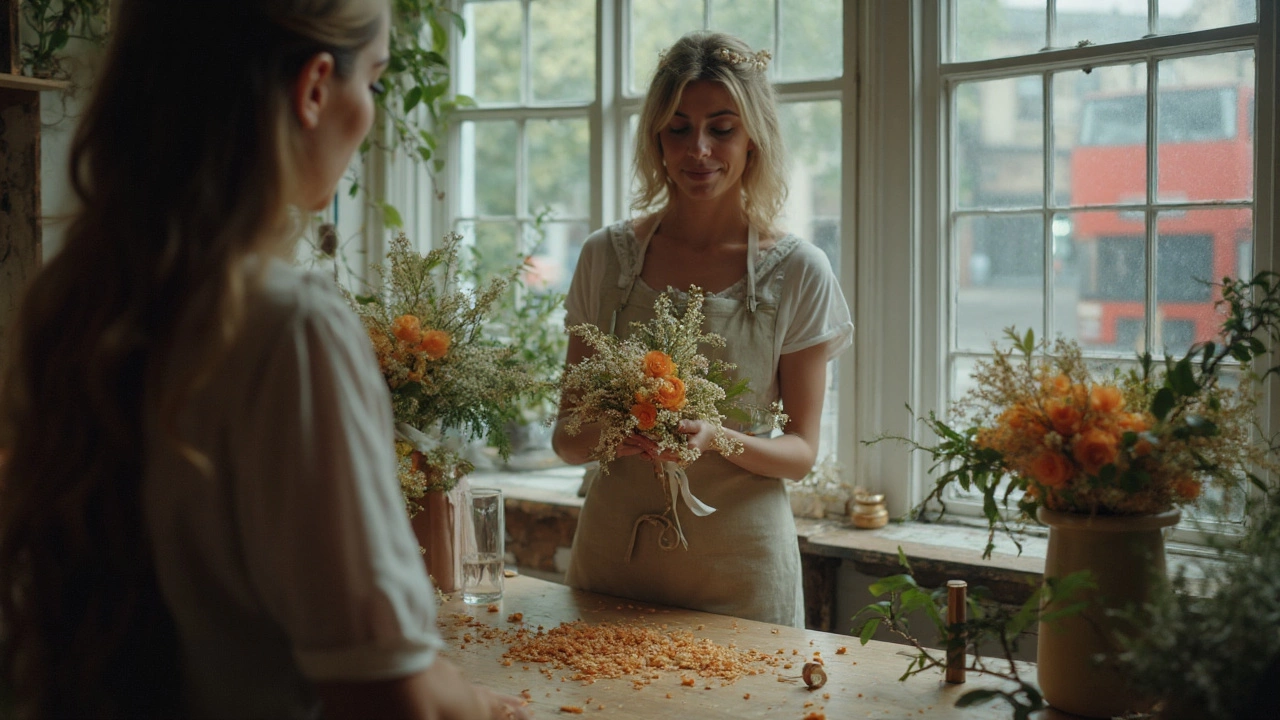Wedding Flower Symbolism: What Your Blooms Really Say
Choosing flowers for a wedding isn’t just about colors and looks. Every bloom carries a message, and those messages can echo the story you and your partner share. Knowing the meaning behind each flower helps you pick arrangements that feel personal and true to your relationship.
Most couples start with a favorite flower or a color palette, but adding symbolism takes the plan a step further. It’s like giving your guests a secret code they can feel without even knowing. Below we break down the most common wedding flowers, their classic meanings, and smart ways to weave those meanings into your ceremony, reception, and even the little details.
Popular Blooms and Their Classic Meanings
Roses – Love, passion, and romance. Red roses scream classic love, while pink suggests admiration and gratitude. White roses stand for purity and new beginnings, perfect for a traditional bride.
Peonies – Prosperity, good fortune, and a happy marriage. Their lush, full shape also hints at a generous spirit, making them a great choice for a spring or summer wedding.
Lilies – Purity and refined beauty. White lilies are often linked to spiritual love and a fresh start, while orange lilies add excitement and confidence.
Hydrangeas – Gratitude and heartfelt emotions. Their big, round heads are perfect for a garden setting and convey a sense of abundance.
Gardenias – Sweetness and secret love. Their strong fragrance can turn a small gesture into a lasting memory.
These meanings are not set in stone, but they give a solid foundation. If a flower has personal meaning for you—maybe a bloom from a first date—mix that personal story with the traditional symbolism for a richer narrative.
How to Use Symbolism in Your Wedding Details
Start with the bouquet. Pair a primary flower that reflects your core feeling (like roses for deep love) with a secondary bloom that adds a layer (like lavender for devotion). This creates a visual story you’ll hold while walking down the aisle.
Centerpieces are another canvas. A mix of peonies and hydrangeas can shout “abundance and gratitude,” perfect for a family‑focused celebration. Add a few single stems of gardenia as a nod to secret, sweet moments you share.
Don’t forget the ceremony backdrop. A arch draped with white lilies and trailing ivy sends a message of purity and enduring growth. You can also hang small bouquets of each flower’s meaning above the aisle, letting guests pick up subtle cues as they walk.
Even the cake can tell a story. Fresh flower petals placed on the frosting—like a single rose for each year you’ve known each other—give a tasty, fragrant reminder of your journey.
Finally, think about wedding favors. Mini seed packets of your chosen flower let guests plant a piece of your love story at home, continuing the symbolism long after the day ends.
When you match meaning with style, your wedding feels more than beautiful—it feels deeply personal. Take a moment to list the emotions you want your day to spark, then match each one with a flower that naturally carries that vibe. The result? A celebration that speaks in colors, scents, and shapes, without you having to say a word.
Use these ideas as a checklist: pick a primary bloom, add a meaningful secondary flower, design bouquets, centerpieces, arches, cake, and favors around them. Keep the selections simple, stick to a cohesive color scheme, and let the symbolism do the talking.
Remember, the best wedding flowers are the ones that feel right to you. Blend tradition with personal touches, and you’ll create a day that looks gorgeous and feels truly yours.
What Flower Symbolizes a Wedding? Orange Blossom, Myrtle, and Timeless Meanings
Ask any florist: orange blossom is the classic marriage symbol, with stephanotis and myrtle close behind. See meanings, cultural picks, seasons in Australia, and bouquet ideas.
Read more